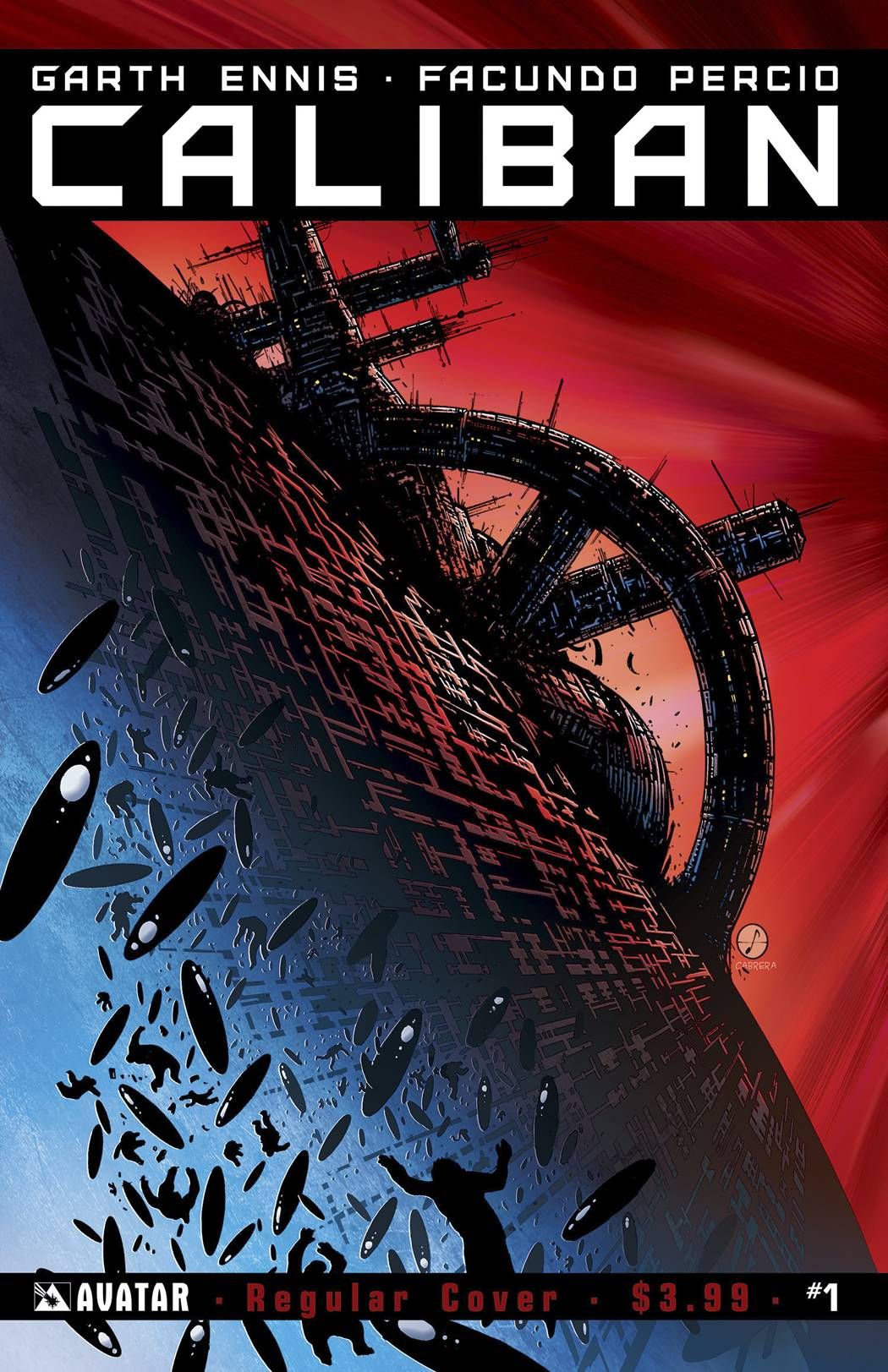Frederik Pohl's famous statement that great science fiction "should be able to predict not the automobile, but the traffic jam," is wonderfully apt for the arresting, unsettling first issue of "Caliban." Garth Ennis imagines the literal traffic jam of the future -- one that takes place in warpspace, instantly melding the two vehicles together. The horrifying collision between the human-led vessel Caliban and its unexpected, alien company is gruesomely rendered by Facundo Percio and Sebastian Cabrol. Matched with knowable characters and a tense atmosphere, it makes for a riveting first issue.
Both Ennis and Avatar Press are known for gore and shock, so by their standards this is a relatively restrained piece. There's some requisite vomiting and nosebleeds, and one particularly ghastly scene, but the bulk of the story is devoted to the crew and their reactions. Judging by the cover, plenty more horror and violence is on the way, but this issue relies more on slow-burning tension and fear than on explicit gore.
The reader gets to know this world primarily through the narration of Nomi, the assumed protagonist. Nomi aspires to write the great American novel, and so she spends her ample spare time typing a memoir on her tablet. There's a convenience to this narrative device which could cheapen it, but it works because it's many-layered. Yes, it allows Ennis to drop a lot of tell-rather-than-show world-building, but it also demonstrates the boredom and tedium that Nomi talks about. It's clear that this crew has a lot of extra time while they're in warp, because they're chatting, grabbing coffee and writing. San's the only one shown working, and she's neither in a hurry nor bothered that Nomi's sitting above her writing.
It also helps that Nomi's narration is full of mood. She writes a variety of things that set off alarm bells, but Ennis resists the temptation to elaborate. Tossed-off phrases like "stillborn things that go straight in the trash" and "suns too bright to look at" raise a tingle on the back of the reader's neck, but nothing more. By showing the tip of the iceberg rather than the whole thing, Ennis makes what could've felt like a 10-page diary entry feel pregnant with terrible possibilities. The slow mix of worldbuilding work in Nomi's writing with character work in the interactions around her is makes the most of every panel.
When things finally went wrong, I understood these characters well enough to feel for them. They all fit certain archetypes -- the profanity-prone hothead, the tough workhorse, the stoic captain -- but what makes them believable is their interactions with one another.
Percio has previously worked on Avatar titles like "Fashion Beast" and "Anna Mercury," and it shows in his grasp of the house style. Cabrol does excellent work on the inking, adding a certain ruggedness without overdoing it. Still, Cabrera's colors are what really make this work. They feel alive and dark, like a spaceship with the lights down, and the only spots of brightness are Nomi's tablet or big splashes of red.
Given its premise and overall tone, "Caliban" will inevitably draw comparisons to "Alien." (This may say more about the dearth of female leads in science fiction than it does about any actual similarities, but I digress.) It certainly feels similar, but never derivatively so. Given this excellent first installment, I'm excited to see it develop its own course.

